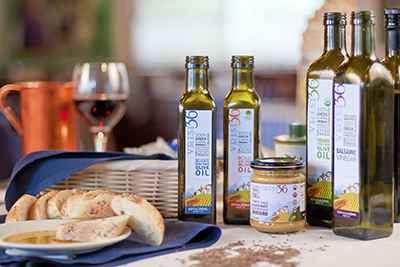How to Read Olive Oil Labels
In today’s health-conscious world, reading food labels can benefit more than just the calorie counter — it can also help consumers make informed decisions about what they are putting in their bodies when it comes to food.
 A simple rule of thumb is to stay away from ingredients with names you don’t recognize. Ingredients like sulfites and caramel coloring may be commonplace in food and drinks these days, but it’s no secret that they can be detrimental to your health, potentially causing issues ranging from allergies to cancer. Food products that contain these ingredients are certainly ones you want to stay away from.
A simple rule of thumb is to stay away from ingredients with names you don’t recognize. Ingredients like sulfites and caramel coloring may be commonplace in food and drinks these days, but it’s no secret that they can be detrimental to your health, potentially causing issues ranging from allergies to cancer. Food products that contain these ingredients are certainly ones you want to stay away from.
However, when it comes to olive oil, even a seemingly “pure” bottle may not be at all what you expect. Studies have shown that “olive oils” tested at random, were possibly not actually true extra virgin olive oil. In fact, up to 69% of extra virgin olive oils on grocery store shelves have been adulterated — which would cause issue for health claims these products boast . (Read more) That’s why it’s important to check for other indicators that can give you insight into the quality and flavor of the product inside:
Acidity Level
The United States regulates that for an olive oil to be considered extra virgin olive oil, it must be at or below an acidity level of .10. However, not every olive oil gets to that point naturally. The moment an olive is picked, its acidity level starts to go up.
The highest-quality extra virgin olive oils spend as little time as possible between the picking and the packing process. That is why selecting an olive oil with a single country of origin and region specific olives is key.
“Refined”
Refined may be a nice way to describe a lot of things, but olive oil is not one of them.
One of the reasons olive oils are refined or blended is to bring down acidity levels. A product must be at or below a certain level to be legally qualified as “olive oil” — with lower-quality products, this is often done by heating, adding chemicals to, or otherwise altering the olive oil. Beyond just lowering the acidity level, the refinement process can also draw out many of the benefits of what should essentially be a nutrient-rich, freshly-squeezed fruit juice.
Olive oils that are refined go through the following steps:
- Degumming (Removes phospholipids using water and centrifugal separation)
- Neutralization (Removes the free fatty acids using caustic soda or sodium carbonate at 95°C)
- Bleaching (Removes color and other constituents)
- Deodorization (Occurs at 180-270°C)
A high-quality olive oil will have a naturally low acidity level — no heating, chemicals or other additives required.
“Blended”
Besides bringing down acidity levels, blending an olive oil can provide a unique flavor profile. However, blending is most commonly used to boost the taste of a subpar-quality product. A high-quality olive oil should be good enough on its own — no additives needed.
An olive oil labeled “Product of Geographical Indication” (PGI) means the olive oil in the bottle is certified to come from a specific region and PGI olive oils tend to be unblended. However, even olive oils of this caliber may have been blended somewhere along the way for various reasons.
The best way to ensure that an olive oil is 100% pure is simply to look for “One Country of Origin” on the back of the label.
Price
Price can actually be one of the biggest indicators of olive oil quality. Comparing the labels and ingredients list of a $7.99 bottle of olive oil and a $11.99 bottle of olive oil, you may find there’s not much difference between the two. In today’s budget-savvy world, it might make sense to go for the cheaper product.
However, when it comes to olive oil, the reality is that you’re getting what you pay for. A $7.99 bottle is priced $4 less than a high-quality bottle for good reason — it has most likely been blended and refined, which can take away from the purity and health benefits of the product.
So if you’re comparing costs, consider this. The average serving size in a bottle of olive oil is around 33. If you’re comparing the two bottles mentioned above, the price difference per serving is just a little over $0.10 — a negligent difference when you compare the health benefits of the two.
“Non-GMO”
Because there are technically no genetically-modified olives, you will not find the “non-GMO” label on your olive oil. However, you can feel confident that when you purchase Vrisi 36, 100% Greek extra virgin olive oil, that it is made the right way, and you are getting a product that’s safe and good for you — period.
Flying Olive Farms’ Vrisi 36 line of extra virgin olive oil, balsamic vinegar and Mediterranean mustard is authentically Greek and completely good for you. Contact us for more information, or find it at a store near you.